|
|
|
As you set foot in the dark tangled jungle your senses are overloaded by an array of sights, sounds and smells coming at you from every direction. The rainforest is a wonderfully complex ecosystem where every organism is in fierce competition; plants overgrow and choke each other in pursuit of light, ants destroy anything in their path and fungus sprouts from every crevice. There is so much going on that the nature photographer can often become bewildered. This overwhelmingly complex environment cannot be captured in one two dimensional image; you must delve deeper before you begin to notice just how many opportunities are right under your nose.
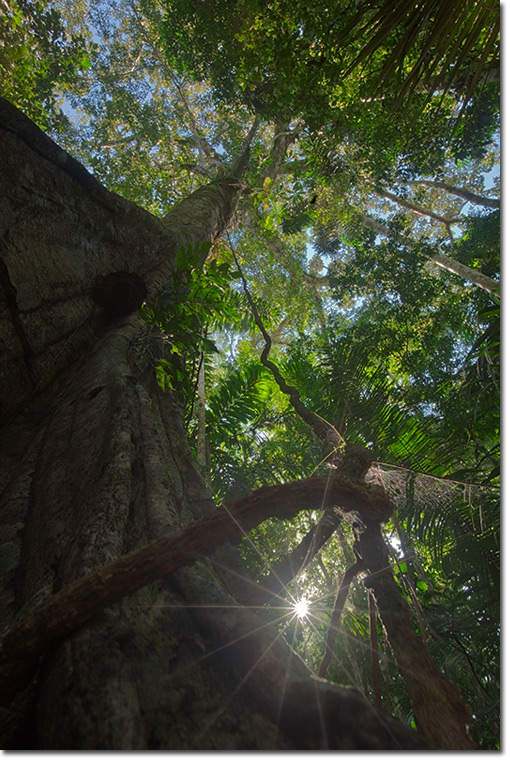
I have spent just under half of the last four years working as photographer and ornithologist in the Madre de Dios region of Southern Peru. Madre de Dios is Peru’s ‘capital of biodiversity’ and is covered in large national parks and reserves as it is one of the most important biodiversity hotspots in the world.
It takes a long time to learn how to capture good images in the rainforest and learning photography here has taught me many lessons the hard way. After making expensive mistakes and missing out on so many opportunities because of broken or non-functional equipment, I feel I am now in the position to tell others everything I wish I was told before I first set foot in the greatest rainforest on Earth.
Most lodges provide easy access to a diverse range of environments, such as oxbow lakes and rivers, as well as numerous swamps and rocky streams.
The Jungle
Larger mammals and birds can be difficult to find and even more difficult to photograph due to their timid, evasive behaviour. A tripod is a necessity and some subtle fill in flash can work wonders if you need to capture some action.
On the other hand you will encounter smaller animals everywhere, whether you like it or not! This is heaven for the macro photographer, as there are so many wonderfully weird invertebrates to be found. Using flash as a primary light source is the norm in macro photography, so the low light levels under the canopy that are often so frustrating are no longer an issue.
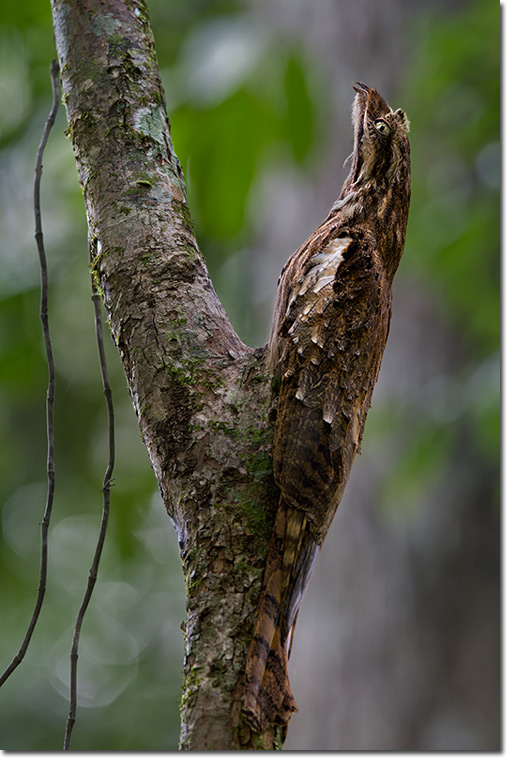
If you really want to see all the jungle has to offer you have to go out at night with a headlamp or flashlight. Once your eyes adjust to the surroundings you notice that the entire forest floor is glittering like the night sky. These lights are the eyes of thousands of invertebrates reflecting your light back at you. As you might expect it doesn’t take long before you come across some really strange creatures. Here you can find spiders predating frogs, frogs predating spiders, colourful katydids and cicadas emerging from their pupae and whip scorpions that look like they come from another world. Night walks are a truly unique experience.
Amazonian Oxbow Lakes
This year I was lucky enough to spend four months at the Amazon Research and Conservation (ARCC). The oxbow here is named ‘Lago Soledad’ which translates to Solitude Lake. For those who’ve been it’s easy to see how this water body got its name. You feel very secluded on this narrow oxbow lake and you sometimes get the feeling you have the whole lake to yourself. Actually you share the lake with a wealth of different animals, of which the most charismatic has to be the endangered Giant River Otter. There are thousands of oxbow lakes in the Amazon, and many are inhabited by these playful animals. If you want to photograph them you need to find a lodge that offer boat tours (most do), and bring a long lens!
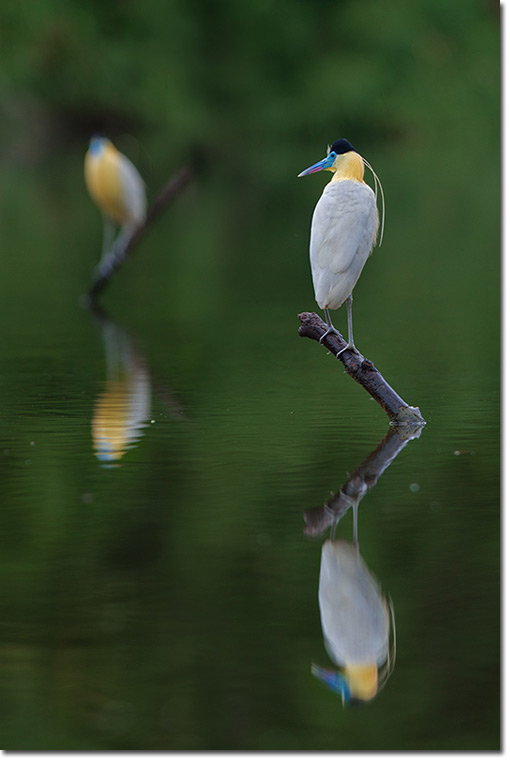
Aside from the otters, there is a plethora of other wildlife to be found on these lakes. Herons and Egrets of ten different species line their banks and hundreds of species of birds and mammals may be seen foraging in the forest on all sides. It is usually best to get out onto a lake early, before the sun gets too strong and the insects come out. There is also usually an added bonus to this in that they are usually misty in the mornings, giving your images a mystical look.
Rivers
The rivers here are best traversed during the months of May and June. This is the start of the dry season, during which the water level drops to reveal new habitat in the form of sandy beaches and grassy margins. Capybara; the worlds’ largest rodent are a common sight, and can normally be found feeding amongst areas of thick grass. Where there are Capybara there are Jaguar pursuing them, and during these two months the chances to see one of these elusive cats are relatively high.
Swamps and the Flooded Forest
One of the few perks of being in the jungle during the wet season is the presence of large areas of swamp and flooded forest. In flooded forests many invertebrates that normally live in the soil are forced to migrate upwards until the floods recede, so you can find some prehistoric looking centipedes and millipedes taking refuge just above the water level. You can create unique images in such places, as few photographers are crazy enough to venture there.
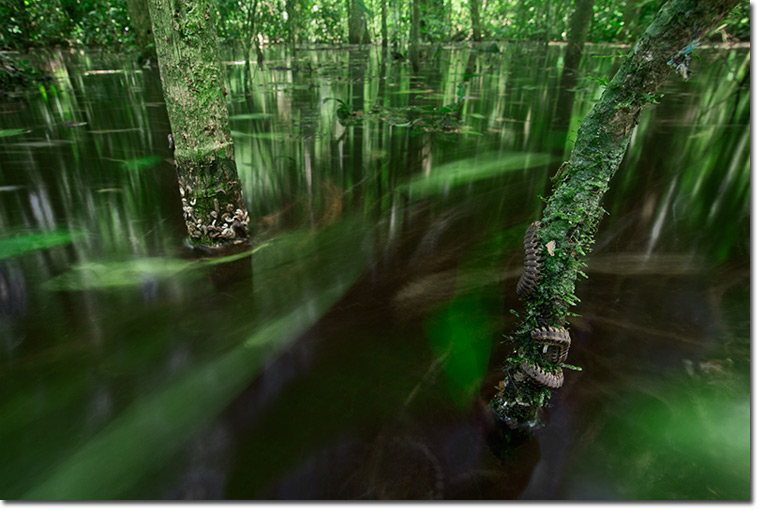
If you don’t feel comfortable getting bitten by hordes of angry mosquitoes whilst waste deep in dark water, wondering if there are anaconda or caiman lurking beneath you, then you should probably stay well clear!
Rocky Streams
Almost all lodges are located close to a large river for access. This means that there are many small tributary streams nearby reaching the end of their course, so they tend to be muddy and brown. If you hike a kilometre or so upstream the environment changes drastically for the better with rock taking the place of mud.
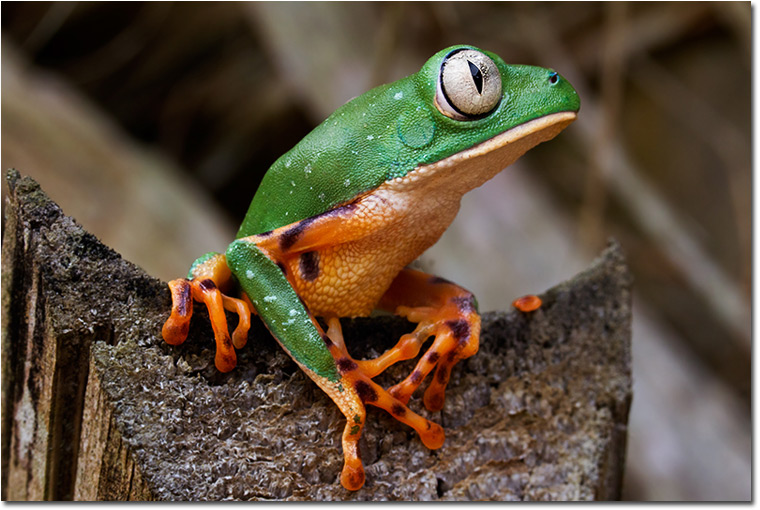
The great thing about rainforest streams is that you can photograph them at any time of day because the canopy blocks out direct sunlight. In addition these streams look especially lush after a long rain, which you won’t have to wait long for!
Around the Lodge
Some of the best animal sightings actually occur inside the lodge clearing itself. Most lodges plant flower gardens which attract hummingbirds and butterflies in abundance. Fruiting trees are often present, bringing monkeys and birds looking for an easy meal. Non-venomous boas can be found easily at night as their huge eyes are so reflective. Not only is this all on your doorstep, but the light is often better in the lodge clearing than the jungle itself, as the canopy is more open.
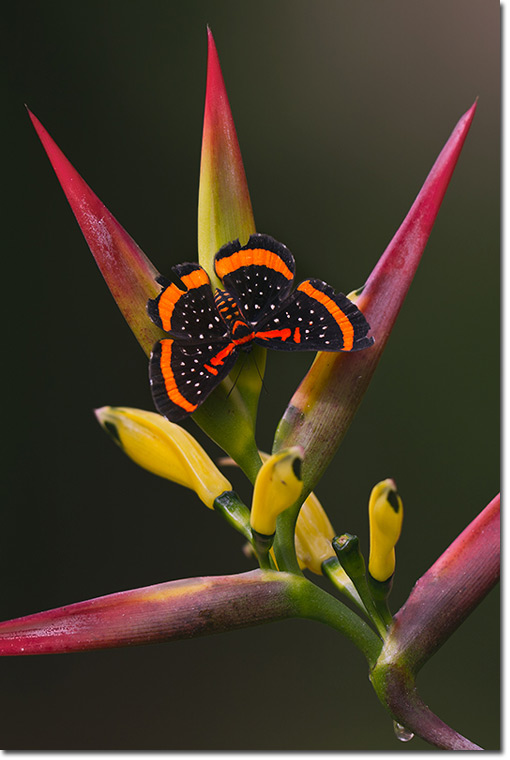
Equipment and Travel Tips
There are obvious things that everyone will tell you to bring to the jungle such as insect repellent, waterproofs and rubber boots to name a few. Here is some of the photographic equipment that I cannot live without, which perhaps is not quite so useful in other environments:
- Tripod: An obvious choice, but so important!
- Remote shutter release: Useful when at low shutter speeds on a tripod
- Polarizer: To remove the glare from wet leaves and flowers
- External flash(es): To compensate for low light
- Dry bag/pelican case and copious amounts of silica gel: To dry out your expensive gear when not in use, preventing mould from invading. I cannot stress enough how important this is. Mould can quickly render your gear worthless, and you cannot insure against it (I know from experience!)
- Cleaning equipment: You will find that you are always cleaning your lenses here
Far and away the most useful lenses here are the long lenses and the macro. The isolation they provide is very useful in such a busy environment. I also use my wide angle quite regularly for those ‘animal in the environment’ shots, but medium telephotos like the 70-200 are almost useless as animals are usually small and there is no opportunity for shooting telephoto landscapes in the dense jungle.
You should spend some time researching the best time of year for your trip for any particular area. The Peruvian Amazon is seasonal, and the best months to visit are from May to August. During this time the climate is more comfortable, rainfall low and the insects are tolerable.
Most of the people I talk to about the rainforest have this idea that it is a dangerous place, with venomous snakes and man eating cats around every turn. This common view couldn’t be further from the truth. Venomous snakes are rare and show little interest in you unless you intentionally antagonize them, and attacks by big cats are almost unheard of in Peru.
Final Thoughts
Although shooting in the rainforest can be difficult, when you capture a great image it can be incredibly rewarding. If you are the kind of person who likes adventure and is fed up of photographing those iconic spots frequented by hordes of other photographers, then the jungle is somewhere you must visit!
Tom Ambrose - NPN 6673
|
 Born in the UK, Tom Ambrose spends half his time based in the Peruvian Amazon and the other half travelling the world. He works alongside Fauna Forever, a small NGO working to conserve a small part of the Amazon and his photography aids conservation here.
Born in the UK, Tom Ambrose spends half his time based in the Peruvian Amazon and the other half travelling the world. He works alongside Fauna Forever, a small NGO working to conserve a small part of the Amazon and his photography aids conservation here.
His up and coming project; One Tree in a Billion aims to encourage individuals to take action for conservation, by showing how much wildlife can be found on just one tree in the Amazon. You can read more about this exciting project here at www.kickstarter.com/projects/1164221067/one-tree-in-a-billion.
You can view more of Tom's work on his website at www.tomambrosephotography.com
.